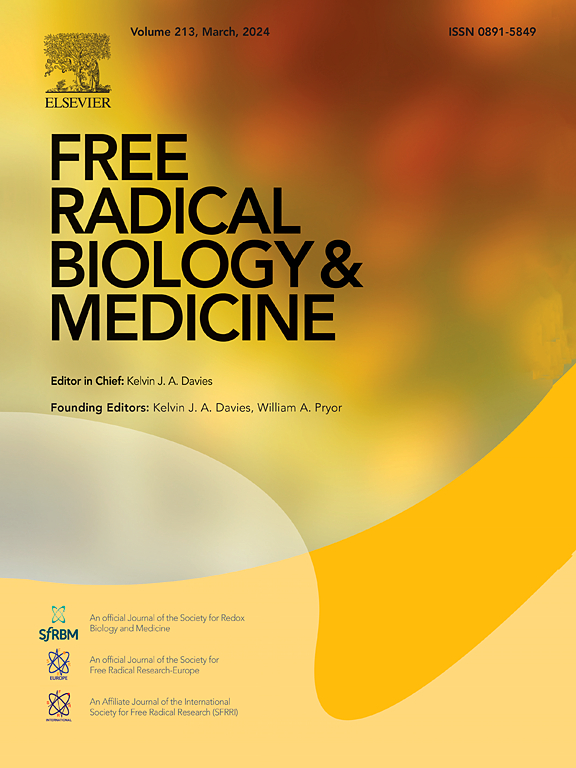Imbalanced redox dynamics induce fibroblast senescence leading to impaired stem cell pools and skin aging
IF 7.1
2区 生物学
Q1 BIOCHEMISTRY & MOLECULAR BIOLOGY
引用次数: 0
Abstract
Skin function depends on a meticulously regulated dynamic interaction of distinct skin compartments such as the epidermis and dermis. Adaptive responses at the molecular and cellular level are essential for these interactions – and if dysregulated – drive skin aging and other pathologies. After defining the role of redox homeodynamics in physiology and aging pathology, we focus on the redox distress-dependent aging of dermal fibroblasts including their progenitors. We here discuss the prime role of senescent fibroblasts in the control of their own endogenous niche and stem cell niches for epidermal stem cells, hair follicle stem cells, adipocyte precursors and muscle stem cells. We here review that redox imbalance induced reduction in Insulin-like Growth Factor-1 drives skin aging by the depletion of stem cell pools.
This IGF-1 reduction is mediated via the redox-sensitive transcription factor JunB and also by the redox-dependent changes in sphingolipid-metabolism, among others. In addition, we will discuss the changes in the extracellular matrix of the skin affecting cellular senescence and the skin integrity and function in aging. The aim is a deeper understanding of the two main redox-dependent hubs such as JunB-induced depletion of IGF-1, and the sphingolipid-mediated remodeling of the cell membrane with its impact on IGF-1, fibroblast heterogeneity, function, senescence and plasticity in skin aging.

氧化还原动力学失衡会诱发成纤维细胞衰老,导致干细胞池受损和皮肤老化。
本文章由计算机程序翻译,如有差异,请以英文原文为准。
求助全文
约1分钟内获得全文
求助全文
来源期刊

Free Radical Biology and Medicine
医学-内分泌学与代谢
CiteScore
14.00
自引率
4.10%
发文量
850
审稿时长
22 days
期刊介绍:
Free Radical Biology and Medicine is a leading journal in the field of redox biology, which is the study of the role of reactive oxygen species (ROS) and other oxidizing agents in biological systems. The journal serves as a premier forum for publishing innovative and groundbreaking research that explores the redox biology of health and disease, covering a wide range of topics and disciplines. Free Radical Biology and Medicine also commissions Special Issues that highlight recent advances in both basic and clinical research, with a particular emphasis on the mechanisms underlying altered metabolism and redox signaling. These Special Issues aim to provide a focused platform for the latest research in the field, fostering collaboration and knowledge exchange among researchers and clinicians.
 求助内容:
求助内容: 应助结果提醒方式:
应助结果提醒方式:


